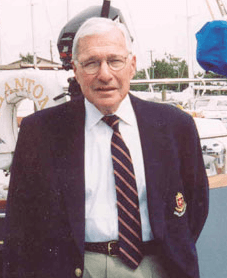Edmund Sonnenblick facts for kids
Quick facts for kids
Edmund Sonnenblick
|
|
|---|---|

Dr. Edmund Sonnenblick
|
|
| Born |
Edmund Hiram Sonnenblick
December 7, 1932 |
| Died | September 22, 2007 (aged 74) Darien, Connecticut,
United States |
| Nationality | American |
| Alma mater | Wesleyan University Harvard Medical School |
| Known for | Cardiac muscle cell research |
| Spouse(s) |
Linda Bland
(m. 1954) |
| Awards | American College of Cardiology Distinguished Scientist Award (1989) American Heart Association Research Achievement Award (2007) |
| Scientific career | |
| Fields | Medical research, cardiology |
| Institutions | Albert Einstein College of Medicine Harvard Medical School |
Edmund Hiram Sonnenblick (December 7, 1932 – September 22, 2007) was an important American doctor and scientist. He was a cardiologist, which means he specialized in the heart. His research in the 1960s changed how we understand and treat cardiovascular disease (heart and blood vessel problems).
Dr. Sonnenblick's work helped develop new medicines, like ACE inhibitors, which are used to treat heart conditions. In 1962, he was the first to take clear pictures of heart muscle using a special tool called an electron microscope. His ideas about how the heart's structure affects its function were new at the time. Today, they are basic knowledge in medicine.
A famous heart doctor, Eugene Braunwald, said Dr. Sonnenblick was one of the greatest heart scientists of the 20th century. After Dr. Sonnenblick passed away, a science journal called Circulation Research described him as "an intellectual giant" in heart research. His work continues to shape how heart diseases are treated every day.
Early Life and Education
Edmund Sonnenblick was born in New Haven, Connecticut, on December 7, 1932. He grew up in Hartford, Connecticut. He was a very good student and graduated near the top of his high school class.
After high school, he went to Wesleyan University. Later, he attended Harvard Medical School, one of the best medical schools in the country. He graduated with honors in 1958.
Discoveries About the Heart
After medical school, Dr. Sonnenblick started his training at Columbia Presbyterian Hospital in New York. During this time, he used an electron microscope to study heart muscle. He was the first to use this powerful microscope to compare the structure of heart muscle with how strongly it contracted.
In 1960, he moved to the National Institutes of Health (NIH). There, he worked with other top scientists like Eugene Braunwald. In 1962, he published a very important paper. He showed that how heart muscle works directly affects how much blood the heart can pump. This finding helped doctors understand why certain treatments for heart problems are effective.
By 1963, Dr. Sonnenblick was using advanced electron microscopy to study heart cells even more closely. He discovered that the way tiny parts called filaments are arranged inside heart muscle cells affects how strongly those cells contract. This was a huge step in understanding how the heart works at a very tiny level. Dr. Braunwald compared his work to what a "brilliant mathematician or theoretical physicist does that ultimately allows you to go into space."
A Lasting Impact
In 1968, Dr. Sonnenblick moved to Peter Bent Brigham Hospital. He became a co-director of cardiology and cardiovascular research there. He also taught at Harvard Medical School.
In 1975, he moved to New York City. He became the first Director of the Cardiology Division at the Albert Einstein College of Medicine. He held this important position until 1996. After that, he was named Chief Emeritus and a distinguished professor.
Throughout his career, Dr. Sonnenblick helped train over 300 heart doctors and researchers. He wrote or helped write more than 600 articles and contributed to 16 textbooks about heart disease. He was also one of the people who helped start the Heart Failure Society of America.
Personal Life
In 1954, Dr. Sonnenblick married Linda Bland. They had three daughters together. Wesleyan University has an annual lecture and a writing award named after their late daughter, Annie.

